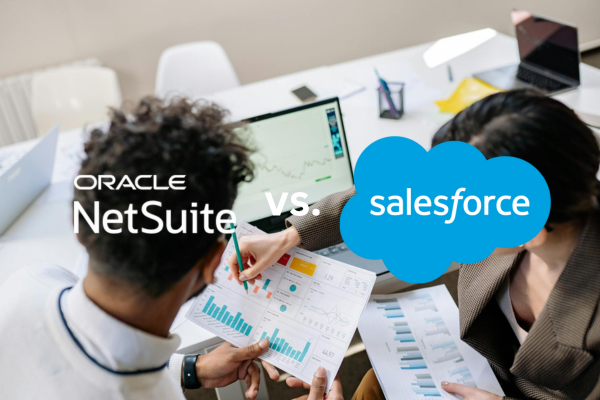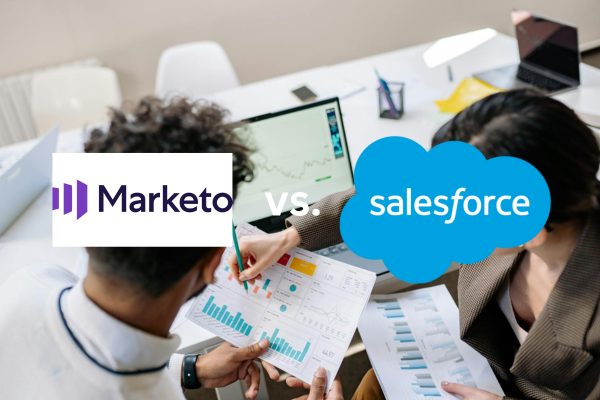Salesforce offers a powerhouse of solutions to enhance all areas of business operations. With a slew of capabilities and plenty of bells and whistles, it is easy to get lost in the functionality of day-to-day features.
However, once your implementation goes live, it is essential to step back and look at the big picture to assess whether you are meeting your goals. We have put together a list of tips and tricks to help you stay on track, ensuring your Salesforce implementation is a success through the go-live period and beyond.
Nurture Lines of Communication
Your post-implementation plan should span beyond technology, with a stringent focus on your end-users. Communication is key — addressing your team's questions and concerns, and carefully considering feedback can make all the difference.
Building virtual communities will encourage ideation and the sharing of information, allowing end-users to learn the ins and outs of Salesforce faster. Switching on Salesforce's IdeaExchange platform — a feedback platform that improves Salesforce for everyone — allows team members to share new ways to improve your implementation. Users can post their own ideas or vote for those contributed by their peers. Take the time to celebrate users who contribute and promote ideas; team-oriented collaboration builds adoption into your organization's culture, effectively decreasing adoption resistance over time.
Another approach to enhancing communication is to conduct weekly meetings with key stakeholders. The meetings will uncover roadblocks before they become major issues and ensure everyone is on the same page. The sessions can be held more regularly in the beginning and decrease in frequency as needed. To add, they do not need to be lengthy — 30-minute sessions should suffice.
Outline Stakeholders' Roles
End users' and stakeholders' roles should be clearly outlined so each team member understands their specific responsibilities. Giving team members a concrete outline of the tasks they are responsible for increases motivation and, generally, the pace at which action items are executed.
Begin by evaluating which roles you require based on the intricacy of your transformation and which roles you can fill using your own resources. While every organization is different, below are four roles that apply to most:
- The Product Owner — the main point of contact for your implementation partner who acts as the project lead. This person should be able to make key decisions regarding which features to prioritize and the approaches to take — as there are often multiple ways to deliver a requirement in Salesforce.
- The Executive Sponsor — an individual who assesses the internal resource bandwidth and allocates the budget. They can also be the contact for more extensive issues that go beyond a project team. This individual ensures project goals align with your company's overall strategy and participates in business process review sessions and status updates.
- Subject Matter Experts — these are power users who can share crucial information about specific job functions the project team would otherwise be unaware of. These experts play a critical role in user acceptance testing, upfront discovery sessions, and training. They communicate what users need from Salesforce, and identify how processes can be improved or made more efficient.
- The System Administrator — this role involves managing all day-to-day activities within the system, including responding to user requests and managing ongoing changes. The system administrator is responsible for adjusting permissions, creating users, generating reports, and performing minor tweaks as required. If your organization lacks the bandwidth needed for this position internally, you can engage a Salesforce implementation partner in a managed services contract.
Leverage Field History Tracking
Leveraging Salesforce's field history tracking feature allows you to keep a pulse on changes made to the software, ensuring the details of changes are organized and easily accessible. Salesforce enables you to retain the field history of up to 20 custom and standard objects, including but not limited to accounts, assets, contracts, and contacts. The feature also allows you to view who is responsible for making a given change, the date it was updated, and, importantly, the field's previous value.
Not only can you identify the nature of the change, but you can also revert each field to its original value — without any heavy lifting. In addition, this digital trail allows you to troubleshoot and assess the efficacy of past changes. Field history data is retained for up to 24 months via the application programming interface (API), allowing you plenty of time to troubleshoot and refine your processes.
Reward Salesforce Adherence
Once your Salesforce solution is configured, user adoption comes to the forefront. Recognizing and rewarding the most dedicated Salesforce users motivates more staff to make the transition. You can identify the strongest Salesforce adopters by measuring users' login rates, the number of reports they create, and the number of contacts they add.
Awarding Salesforce enthusiasts by adding them to a leaderboard can facilitate friendly competition and increase Salesforce adherence. Another option is to reward adopters with prizes, points, and certificates. To learn more about enhancing Salesforce adoption, see our related blog, Boosting the Adoption of Your Salesforce Implementation.
Wrap-Up
This guide is a great place to start — but if you are looking for specialized, one-on-one support, we are just a few clicks away. We deeply understand the potential challenges related to implementing Salesforce and are well equipped to help you navigate through them. Contact Gerent today to learn more about how we can help your company's digital transformation thrive with Salesforce!










